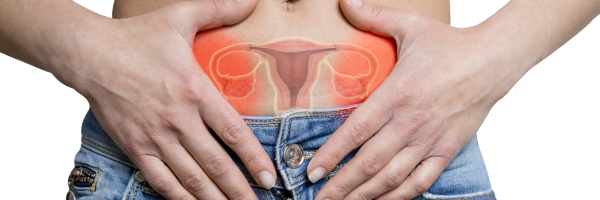
Polycystic Ovary Syndrome (PCOS) is considered to be the most common endocrine abnormality in women of reproductive age (Azziz, Woods, Reyna, Key, Knochenhauer, & Yildiz, 2004; Costello, Shrestha, Eden, Johnson, & Moran, 2010).
Normal ovulation relies upon selection of a follicle that becomes ‘dominant’ and ovulates (Balen, 2000). In women with PCOS there are multiple small cysts which contain potentially viable oocytes yet with dysfunctional follicles.The current recommended definition (ESHRE/ASRM, 2003) diagnose PCOS when a woman has two of the following; oligo- or anovulation, clinical or biochemical hyperandrogenism, and/or polycystic ovaries (with the exclusion of other aetiologies). Clinically the presentation can include infrequent or light menstruation, infertility, hirsutism and acne (Costello, Shrestha, Eden, Johnson, & Moran, 2010).
In Australia NHMRC says PCOS affects 12-21% of reproductive-aged women depending on the population studied and the diagnostic criteria used and is considered a “major public health concern”. The current WM treatment options are lifestyle changes, prescription medication including the oral contraceptive pill (OCP), clomiphene, metformin, gonadotrophins and surgery. The National Health and Medical Research Council [NHMRC] (2011) considered lifestyle management to be the first-line of therapy to improve reproductive, metabolic and psychological features. This includes reduced dietary energy intake and exercise. The suggestion is that this is used for 3-6months to determine if ovulation is induced before trying pharmaceutical ovulation.
PCOS & Acupuncture – Literature Review
Acupuncture may have a role in treating the pathology of PCOS with a focus on regulating ovulation and menstruation.
Lim et al. (2011) and Lim and Wong (2010) reviewed acupuncture and PCOS and suggest that acupuncture has a low adverse event rate, no risk of multiple pregnancies and is relatively inexpensive.
Takeshi (1976), found acupuncture could control the ovulation mechanism and may provide an approach for fertility regulation. Gerhard and Postneel (1992) observed that acupuncture induced regular menstrual cycles over using hormone therapy. Mo et al. (1993) claimed an 82.35% effective rate for inducing ovulation. The fourth trial (Stener-Victorin et al., 2000) evaluated patients with electro-acupuncture (EA) and its effect on PCOS anovulation and other endocrine features. The results showed that EA caused regular ovulation in one third participants.
Jin’s (2002) study of ovulation induction concluded that adequate oestrogen levels were closely related to ovulation induction with acupuncture. Biphasic basal body temperature charts occured after acupuncture .
Pastore, Williams, Jenkins and Patrie’s (2011) study of 84 women showed similar improvement in LH/FSH ratios in both the true and sham acupuncture groups. Wang, Zhang, Wu, and Lu (2007) described 26 cases of PCOS. Results showed 6 (23.1%) cured, meaning they had a regular cycle for more than 3 months post treatment or became pregnant. 15 (57.7%) cases improved where their menstrual cycle and volume was normal for less than three months and ultrasound confirmed a reduction in follicles, 5 (19.2%) failed with no change. Stern (1999) illustrates three cases of women diagnosed with PCOS, each with varying diagnoses and presentations. All three cases showed improvement over time.